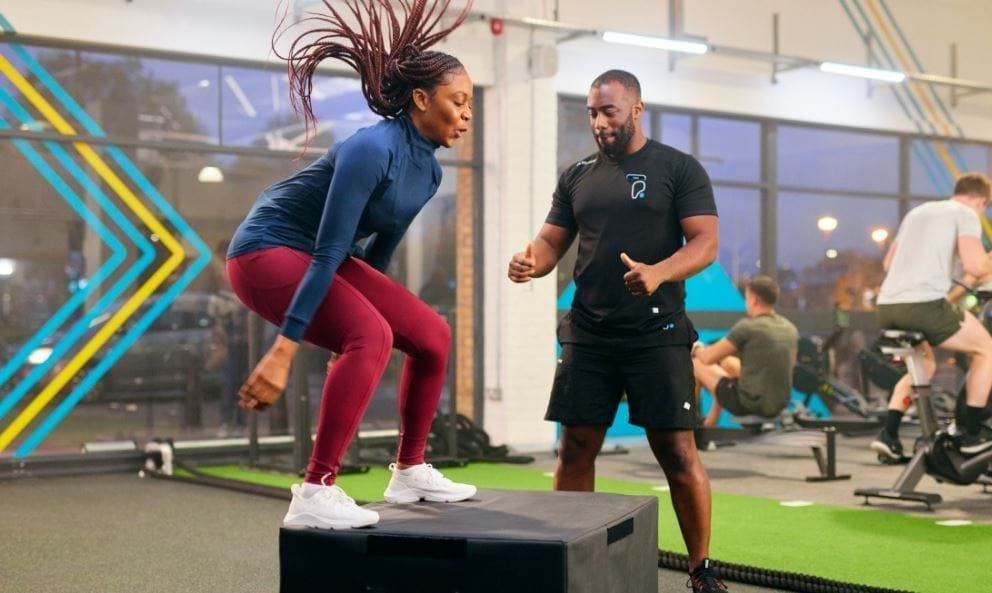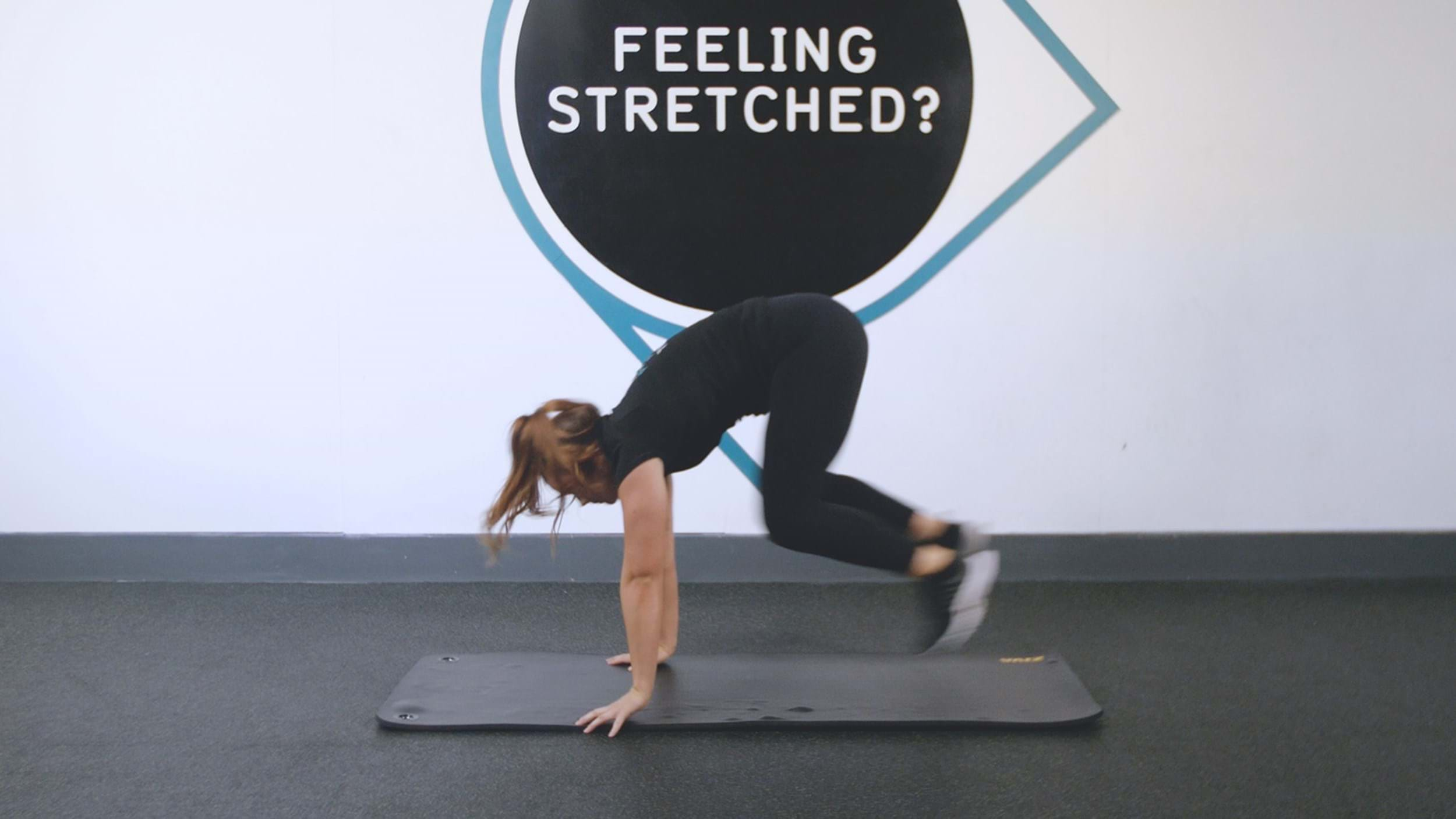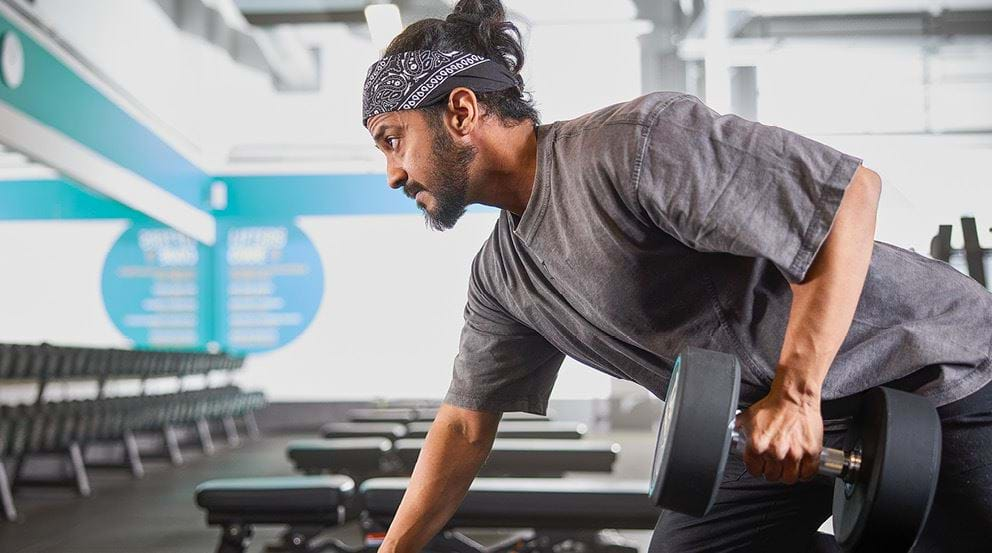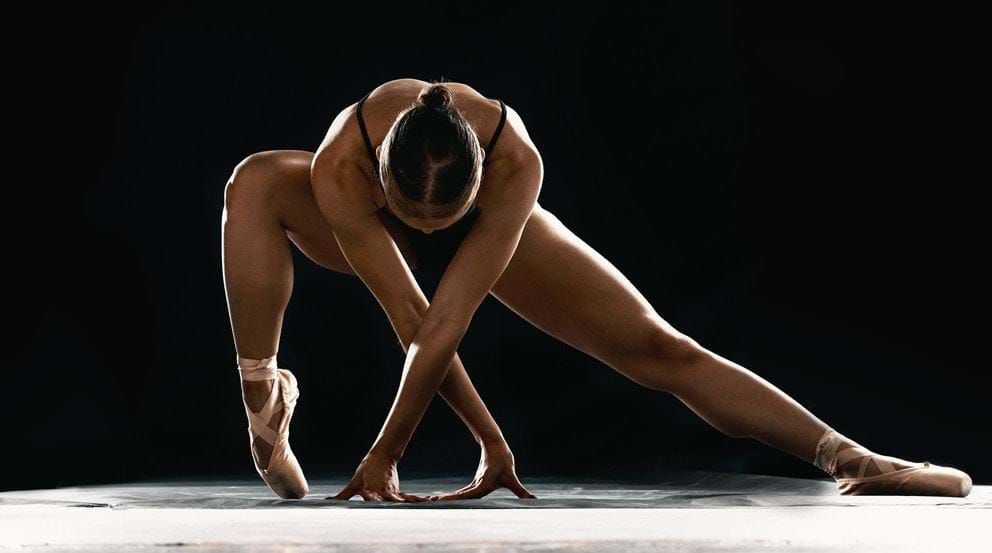What is Plyometric Training? Why and How to Do It

If you're looking to boost strength, improve your fitness performance and, ultimately, challenge yourself in the gym, then plyometric training could be for you. Read on to learn more:
What is plyometric training?
Created by Yori Verkhoshanksy in the late 1960s, plyometrics was originally called the Shock Method. It's a workout style that focuses on building strength through powerful, explosive movements -- in particular, exercises which involve the stretching of a muscle, followed by a rapid contraction (also known as a stretch-shortening cycle) - for example, a squat stretch followed by an upwards jump.
Plyometric exercises are high-intensity, so these movements are ideal for integrating into a HIIT workout. You can also do full body plyometric workouts, or incorporate individual movements into your regular workouts.
Examples of plyometric training include:
Jump squats
Box jumps
Jump rope
Burpees
Clapping push ups
Tuck jumps
What are the benefits and advantages of plyometric training?
Like weight training, plyometrics help to build strength. However, the explosive nature of the movement means you'll be working your muscles as hard as you can functionally, and plyometric exercises are also excellent at building power, agility, and speed, and improving cardiovascular endurance and efficiency.
This training format is a favourite among athletes and fitness fans thanks to the incredible boost it can bring to your performance in other activities and sports.
Benefits of plyometric training include:
Develops fast twitch muscle fibres - also known as Type 2 muscle fibres, fast twitch muscle fibres help to power quick bursts of energy. These support agile movement, including fast reactions, and exercises like running and jumping
Increased strength -- many studies have found plyometric exercises are very effective at building strength and hypertrophy in the muscles that are contracted
Healthy joints -- plyometrics increase the strength of your tendons, creating healthier, more stable joints
Improves abilities in other exercises - one of the main reasons people include plyo training in their workout plans is because of the huge benefits it has on other sports and fitness performance. The increased strength and agility means you'll be able to lift heavier, run faster, hit harder and enjoy improved responsiveness and coordination
Can be done without equipment -- plyometric exercises can be done pretty much anywhere, with minimal to no equipment

How often should you do plyometric training?
Plyo training is high intensity, and often high impact -- it's not something we'd recommend doing every day! These exercises can be tough on your body, so even for those who've been training for a while, we'd recommend taking recovery days between sessions.
If you want to incorporate plyometric training into your workouts, try adding in plyometric exercises to your workouts two to three times a week, or swapping an existing workout for a plyometric training session. This will be enough to get the benefits, but without weighing too heavily on your joints or muscles. You can build this up over time if you enjoy this style of training.
For beginners, start with one or two exercises and work on these once or twice a week. Easing yourself in will allow your body to adapt to this type of training, so there's less chance of injury. Focusing on one or two exercises at a time also means you can work on perfecting the technique, which will help you to get the most out of these exercises.
Is plyometrics good for weight loss?
Yes, plyometric training can definitely help if you're looking to lose weight. It's high intensity, so you'll be increasing your heart rate and burning tons of energy (calories and fat) during your workouts. Over time plyometrics helps to build muscle, which can increase your metabolism so that you're burning more calories at rest. These factors can help create a calorie deficit, which is what leads to weight loss.
If you're serious about weight loss as a goal, you'll likely need to pair plyometric exercises with a calorie deficit in your diet. You can learn more about calories and weight loss here.
How to programme plyometric training
Always make sure your body is warmed up before plyometric training. This helps to avoid injury
If you're doing other types of training in the same session, do your plyo first - you want to make sure your form is correct, and it's harder to do this when your body is already fatigued
Make sure you’re confident on the form of the exercise you’re doing before putting your all into the movement. Focus on getting your positioning right by starting slowly, in front of a mirror and then building up speed until you’re sure you have it nailed
Adjust your plyometric volume depending on your experience. If it's your first time trying a plyometric exercise, see how many reps you can do before your form starts to break down. Each week, try to increase this
Train different body parts throughout the circuit - if you prefer to do all of your plyometric exercises together in one workout (rather than spread out into your other workouts), plan your circuit so your muscles get to recover after an exercise
Don't forget to cool down and/or foam roller after your session
Example plyometric workouts
Ready to get started? Here are two example workouts that both incorporate plyometric training exercises:
5 move, plyometric cardio workout:
This 5 move cardio workout features all plyometric movements, which are great for an effective, full body training session that will boost performance, torch calories and improve muscle strength.
- 180 pop squats - this squat jump variation also includes a 180 turn for maximum effort
- High knees - great for you lower body, upper body, hips and abs, this high intensity movement will be sure to get your heart rate up
- Skaters - focusing particularly on leg power, this dynamic movement also targets your glutes and hip joints
- Burpees - love them or hate them, burpees are high intensity and incorporate several plyometric movements into one fantastic full body exercise
- Squat jacks - mixing squats with jumping jacks is a powerhouse plyo move that will help build strength, speed and fitness
Top 5, plyometric fat burning exercises:
A great option if you're hoping to use plyometric training as part of a weight loss goal, this workout includes five explosive moves which will be sure to burn plenty of calories, as well as building muscle and stability:
- Dumbbell squats - while this doesn't include the classic 'jump' move, the explosive upward movement into the press will still reinforce the benefits of plyo training
- Mountain climbers - you'll feel this movement through your whole body, as this plyometric movement drives power through your legs
- Burpees - what is a plyo workout without burpees?
- Kettlebell swings - another way of incorporating weights in your workout, this dynamic movement is surprisingly high intensity
- Walkout push up - keep your energy levels high with this movement, not letting yourself stop to rest until your reps are done. To switch this up and add even more plyometric style to your push ups, propel into a clap between walkouts.
Build your own plyometric workout:
Fancy creating your own plyo workout? Choose a few exercises from any of the ones above, or any of the ones below and create your own circuit:
- Box jumps
- Broad jumps
- Medicine ball slams
- Squat thruster
- Reverse lunge and knee drive
- Split squat jump
- Medicine ball chest pass
Looking for more ways to boost your abilities in other sports and activities? Check out our improving sports performance hub for more tips and advice. Get started on your fitness journey today by becoming a member at PureGym, or book in with a Personal Trainer for a one to one session.


